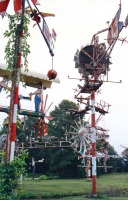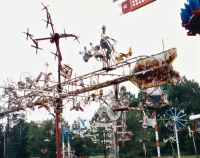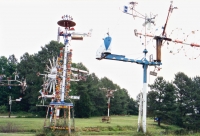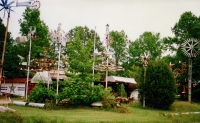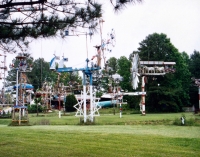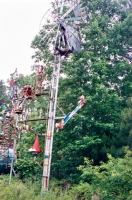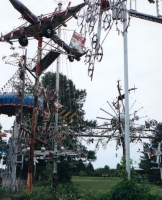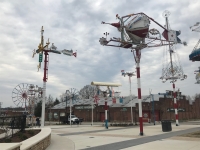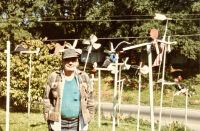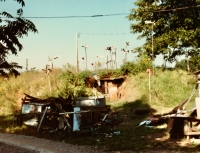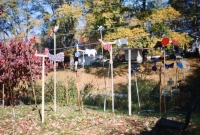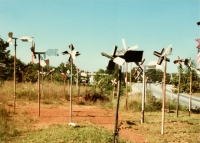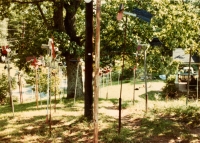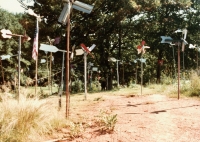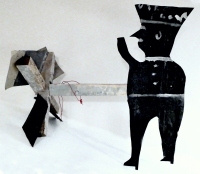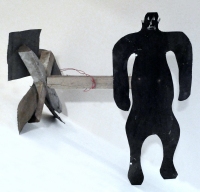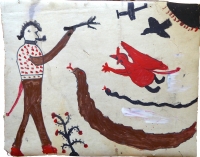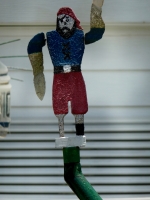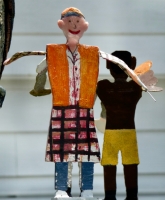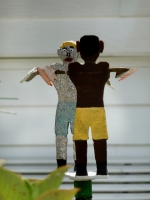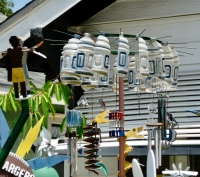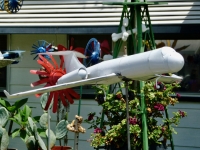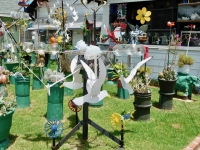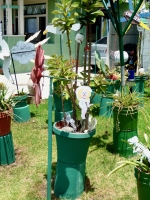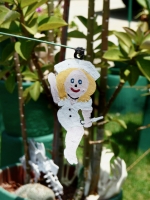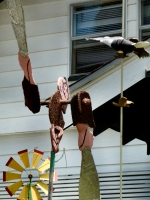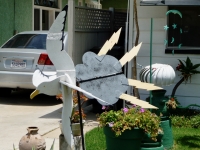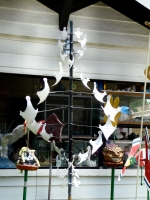Wind power today usually means alternative energy, but there are those who harness it as a source of personal expression: The whirligig makers.
Vollis Simpson ran a machine shop, did heavy equipment repair and was involved in moving houses. In retirement, he started tinkering with odd parts he had lying around. And he started making whirligigs. Big ones.
His original whirligig park, in an out-of-the-way field in out-of-the-way Lucama, North Carolina, was the world’s most spectacular concentration of these wind machines. Simpson died in 2013, but the whirligigs were preserved and relocated to a dedicated park in nearby Wilson, where they still operate.
R.A. Miller covered his hillside property in Gainesville, Georgia, with whirligigs, though of a different sort than Simpson’s. They were very basic figures cut out of sheet metal and mounted on a piece of wood with the simplest of fins attached to catch the wind. But they were charming, and available in quantity at absurdly low prices. When I asked Miller why he sold them so cheap when people marked them up by large multiples to resell, he basically just shrugged. Miller also made stand-alone metal figures, and he drew. Favorite subjects included dinosaurs, snakes, devils and “Blow Oscar,” who, he told me, was a cousin. “Lord love you” was a favorite catch phrase, and, in the art world anyway, just about everybody loved Mr. Miller.
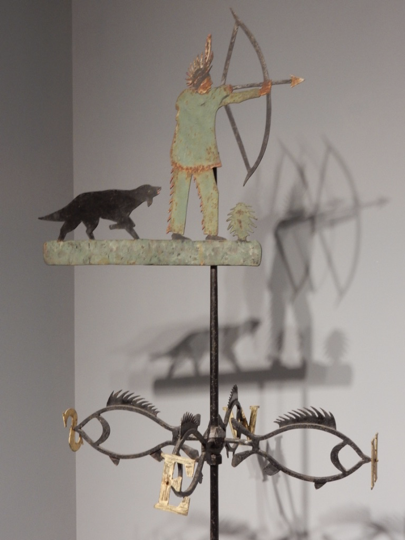
Metal cutouts have done long and honorable service in the wind-machine department. And older whirligigs can be quite elaborate, if not quite on Simpson’s scale..
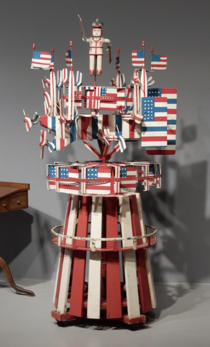
Much more common today are manufactured decorations, commercial patterns and kits. Whirligigs have become a popular craft form, sometimes folky, but mostly store-bought in one form or another.

Making something from a pattern or a kit does not exclude individual creativity, however, especially if output is amassed in quantity. The result can be a full-fledged art environment, and those can turn up anywhere. This San Diego house is a good example, sitting on a pleasant but unassuming residential block in the northeast part of the city. Its whirligig garden includes store-bought parts, but also features lots of nice, folky touches.
Paul Hefti decorated his LaCrosse, Wisconsin, backyard with whirligigs and art objects made from plastic soda bottles. A genius of recycling and reuse.
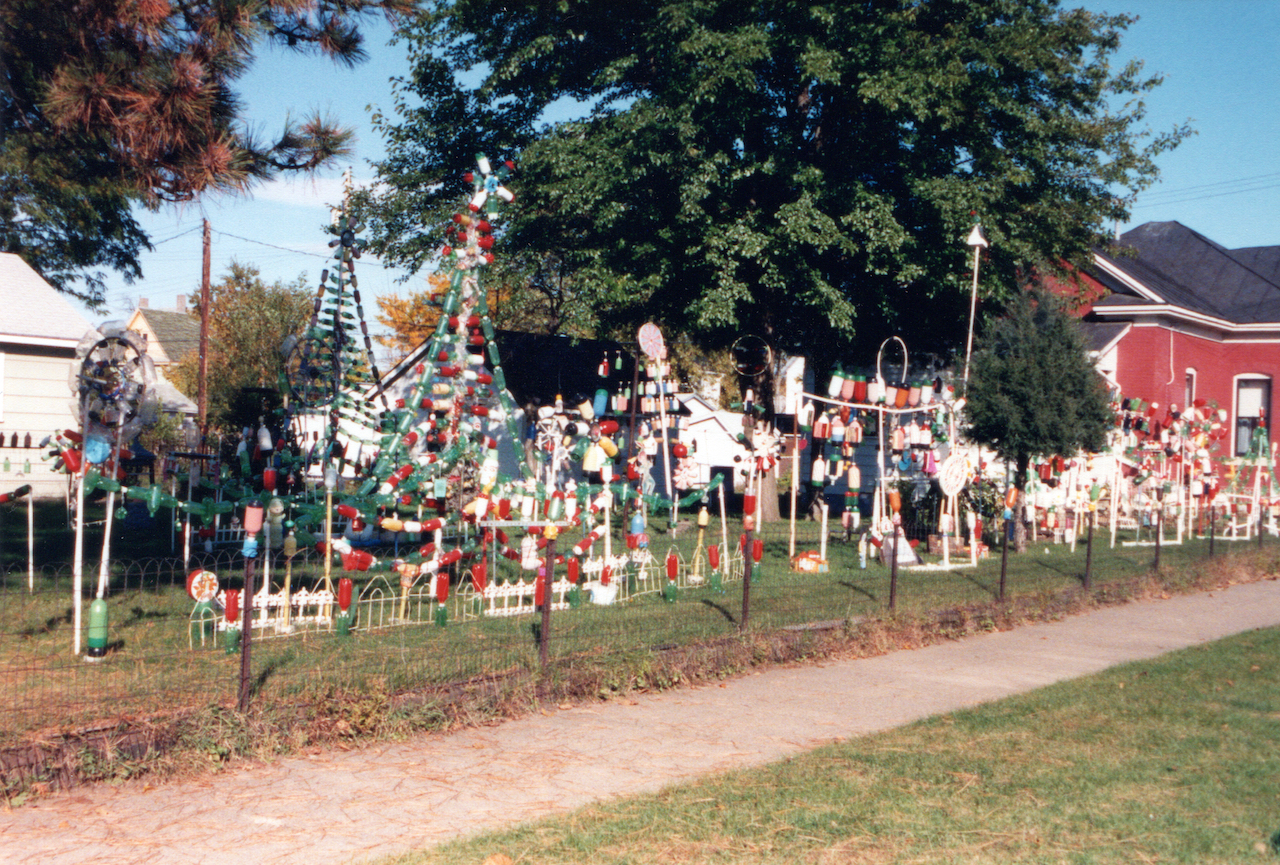
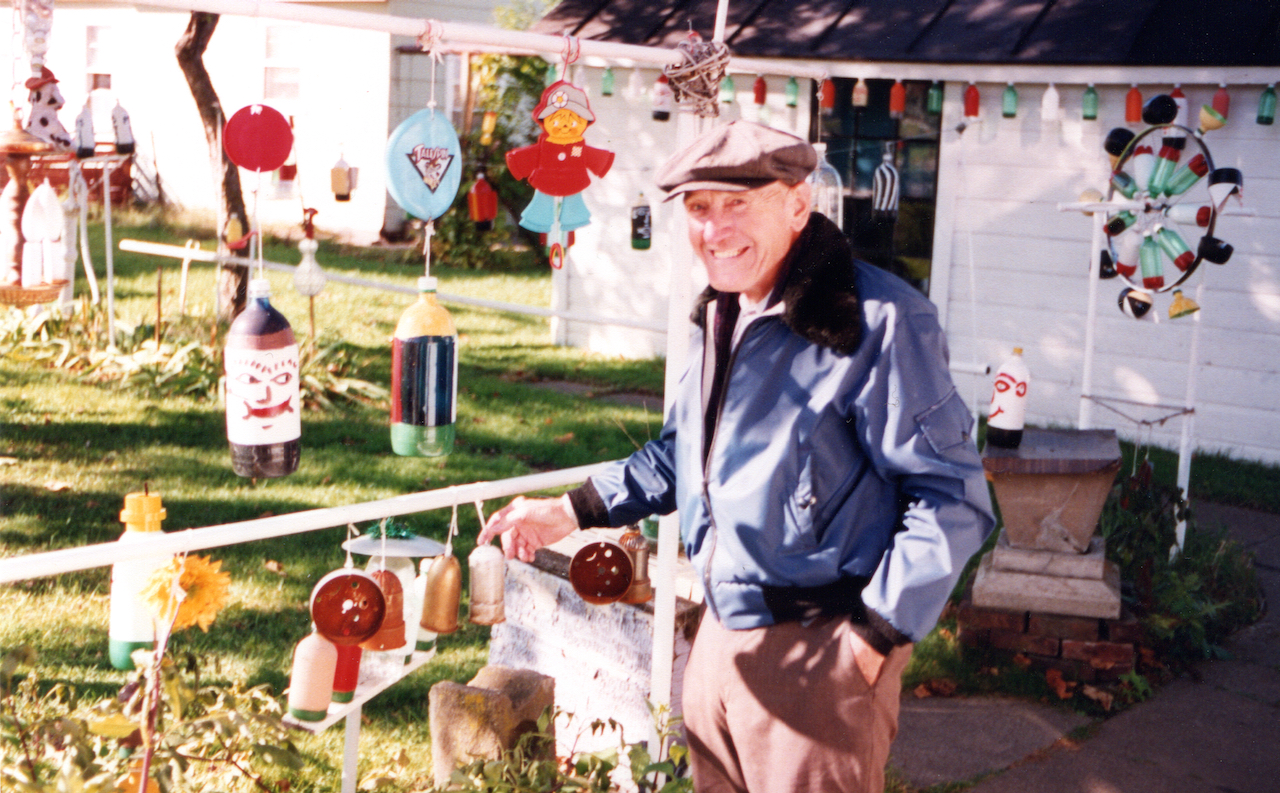
Commercial pinwheels, whirligigs and old oil bottles were turned into a dramatic personal garden around a trailer on Highway 51, north of Cairo, Ill.






